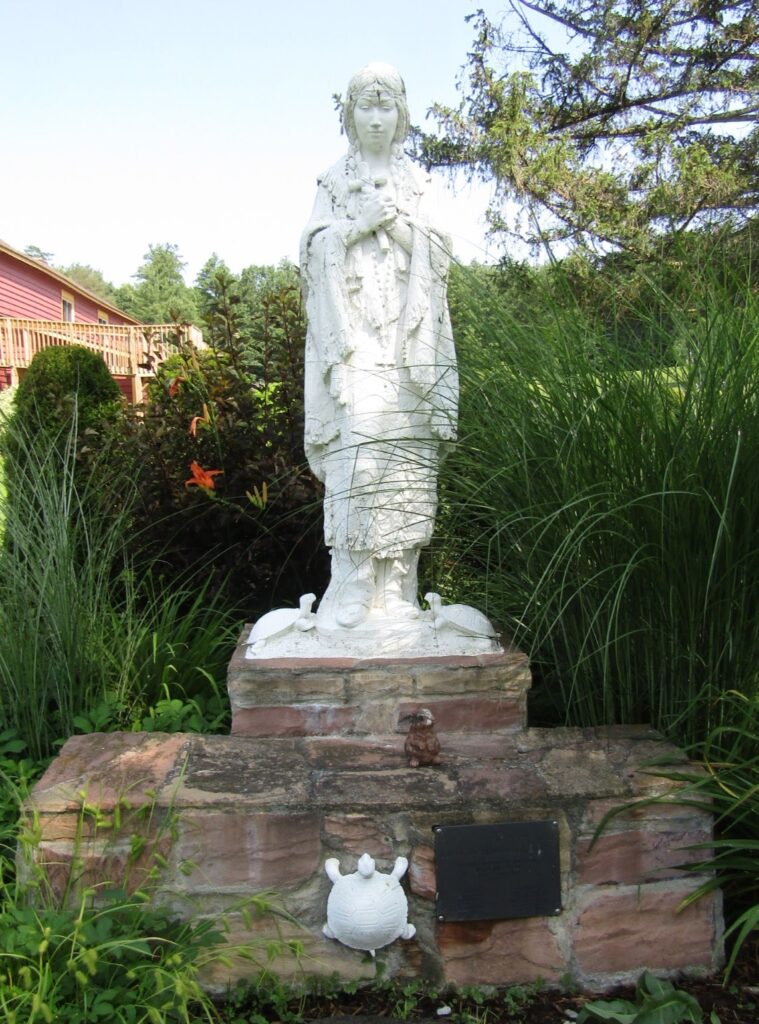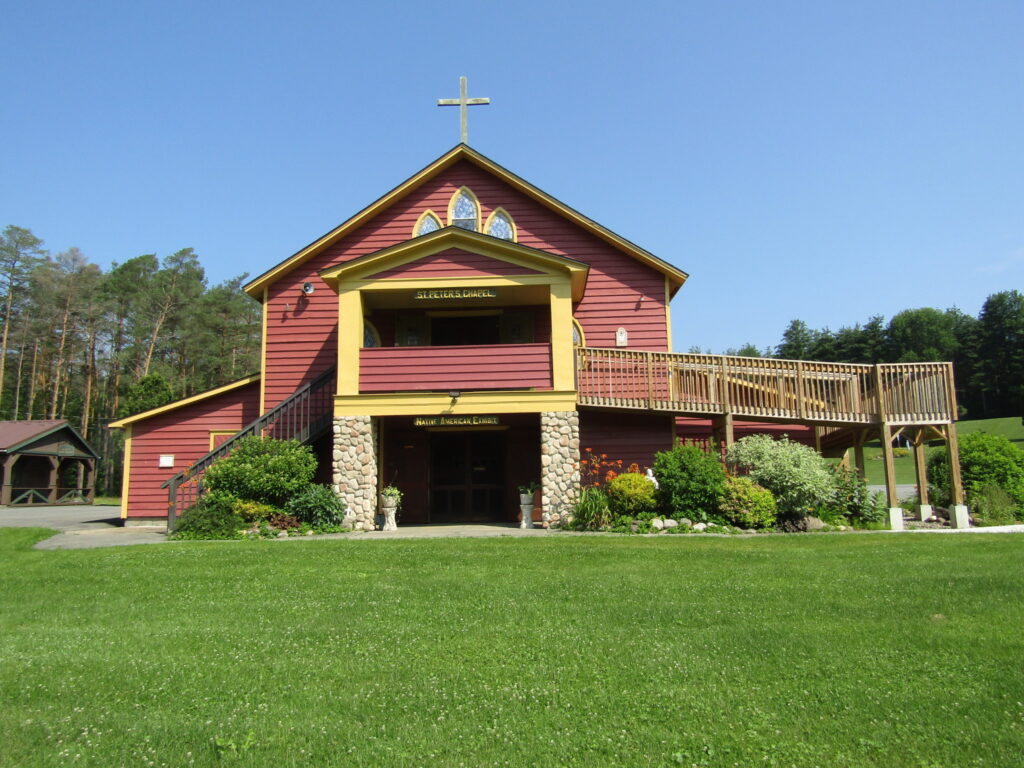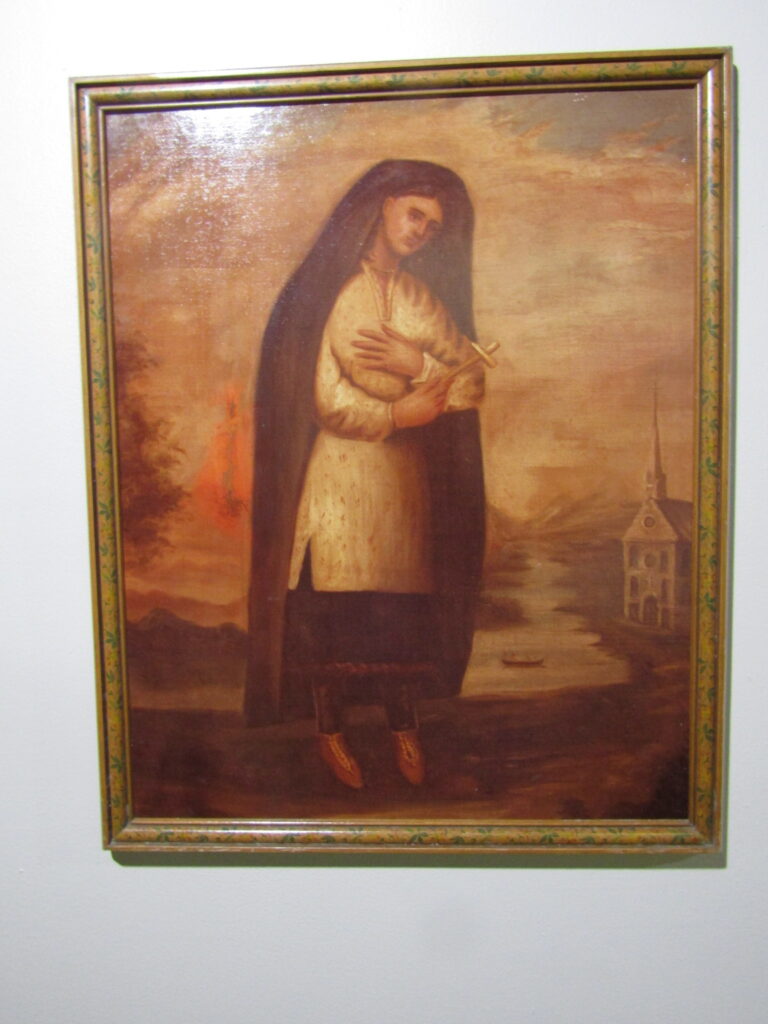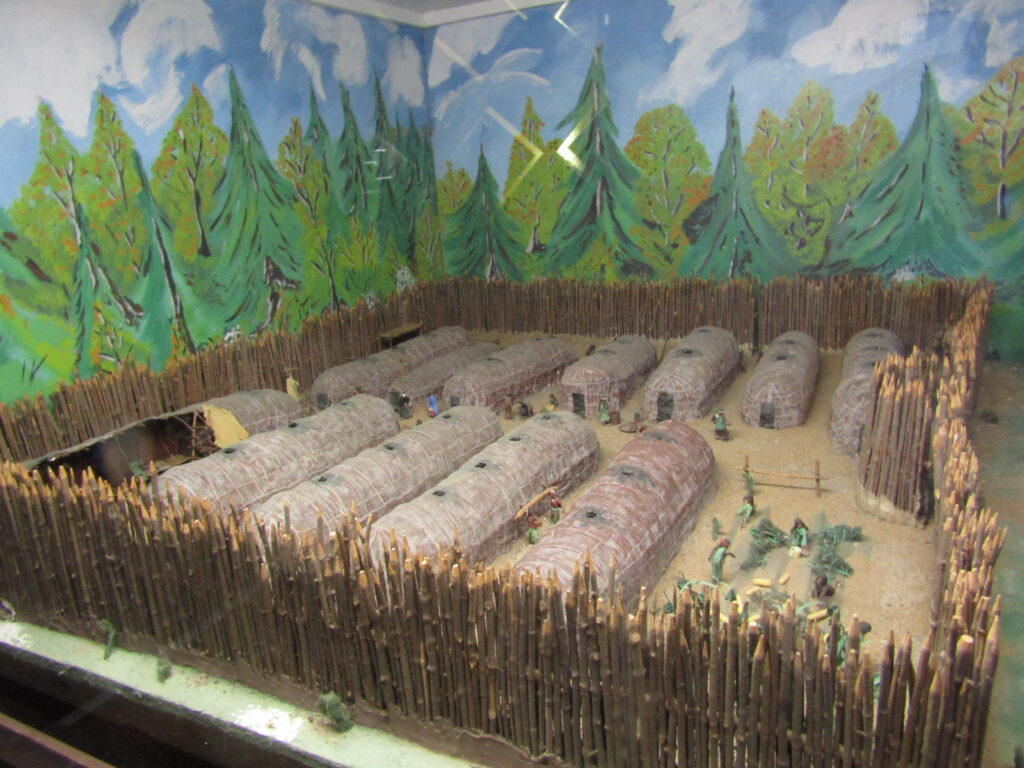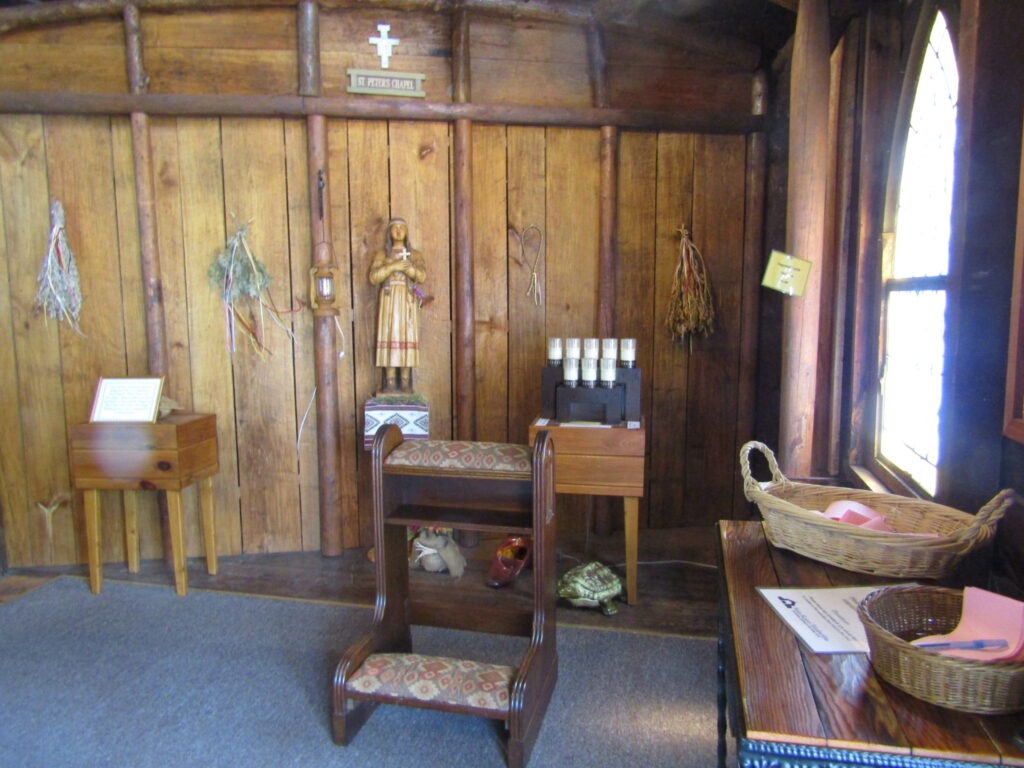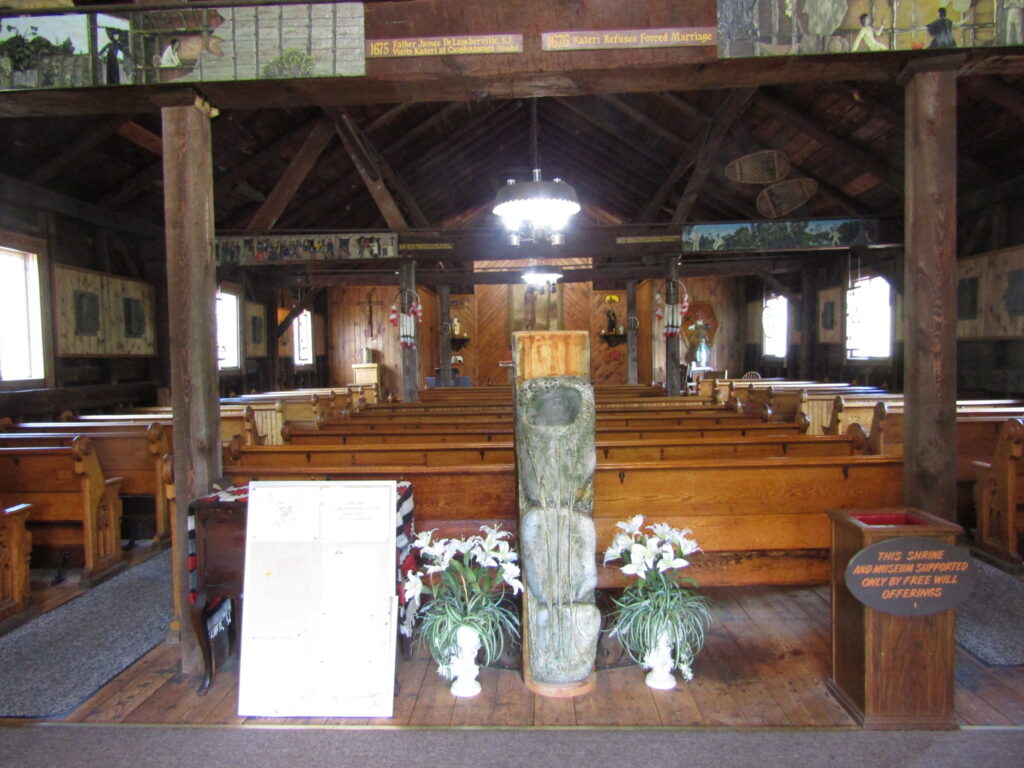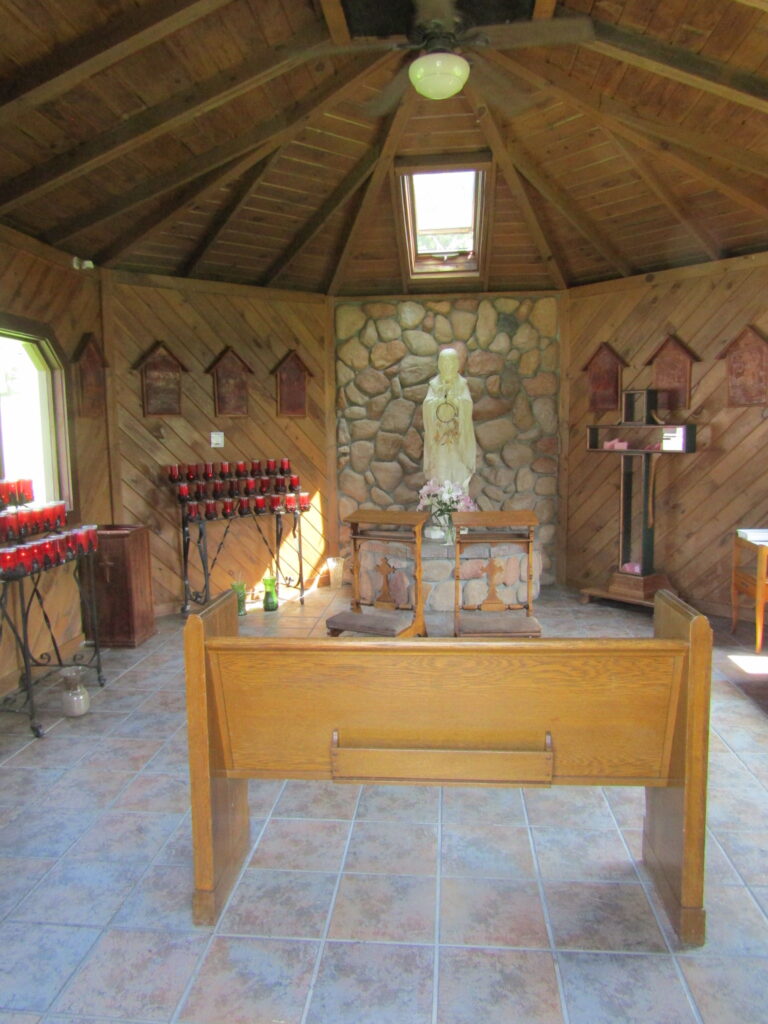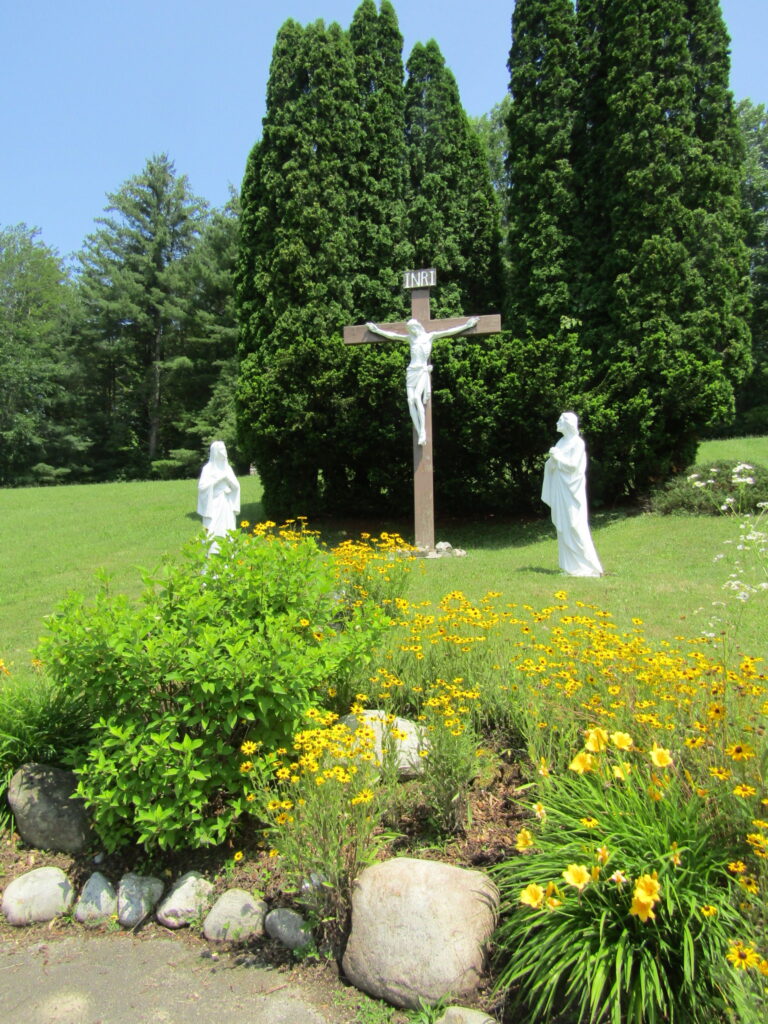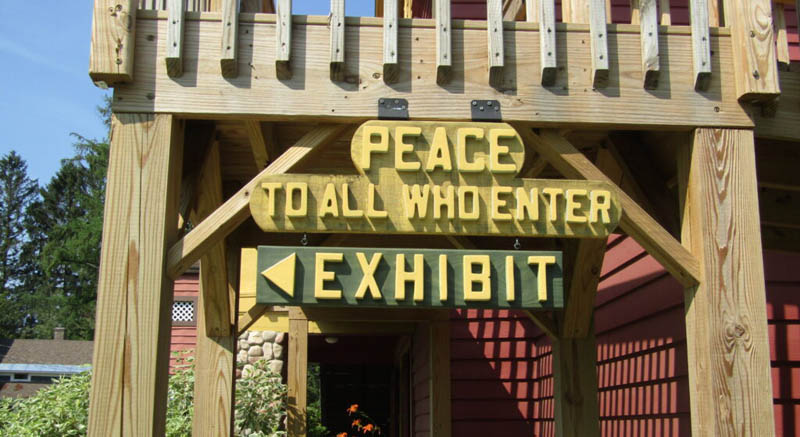By AMY PERRITANO EDDY
On a beautiful June day, I decided to pack up some snacks, my camera, a journal and drive to the St. Kateri Tekakwitha National Shrine and Historic Site in Fonda.
It is a straight drive east on Route 5. A couple of months earlier, I visited Our Lady of the Martyrs Shrine in Auriesville and made it a goal to visit “the other shrine” in the near future.
We previously learned all about St. Kateri’s life from A.J. Valentini in the spring edition of this magazine. A remarkable, young, indigenous woman of the Mohawk tribe, her family was hit by tragedy when smallpox took her mother and little brother along with her own health. She became visually impaired, visibly scarred and physically weakened.
She was known as Tekakwitha because it means “she who fumbles her way” or “she who bumps into things.” She was a healer because of this disability, for it was believed that enhanced healing skills came with impairments in vision or other senses.
So, while it might seem like a terrible name to call a kid today, it was just a matter of fact in those times. It makes sense even now, though. We each have our own strengths and talents, despite our weaknesses.
St. Kateri (or Catharine, as she liked to be called), was born in the village of Ossernenon, which is the site of Our Lady of the Martyrs. The people there were forced to flee due to attacks from the French. They moved north to Caughnawaga village, which is where my journey, and my story, takes me.
When I arrived at the shrine, I visited the Native American exhibit first. Though it is small, it does an effective job telling the history of how human beings came to be where we are living today and how archaeology has helped identify these people, objects and purposes of such in the past. There is a topographical map of the area that lights up (sort of, it clearly needs maintenance) to show you what tribes were where and how those areas relate to the places we know today.
Also in this museum is a separate room that tells the story of St. Kateri in textual plaques on the walls. Starting on the right with her birth around to the left with the story of how she finally became canonized by Pope Benedict the XVI in 2012. Within her story is a portrait that is said to be the only accurate image of her, painted after her death by the Rev. Claude Cauchetiere, a Jesuit priest who knew her. Although she resembles a nun here, she is wearing the traditional blanket of her people.
Next, I went upstairs to the St. Peter’s Chapel where Masses are offered. There is an altar, electric candles, a place to write intentions and a few murals of key moments of St. Kateri’s Christian life. I walked around, took in the ambience, knelt at the altar and left an intention before heading to the next area.
While St. Peter’s Chapel has electric candles (that burn for five days), there also is a Candle Chapel with real candles. I did light a candle here but did not linger long as the bees and wasps seemed to appreciate the chapel’s beauty as well.
Before entering the Candle Chapel, there is a little picnic table with various sized twigs and string so you can make your own cross.
With my own cross completed, I began walking the trail of the Stations of the Cross. I really wanted to sit quietly on the bench in front of the crucifix to write some of my thoughts so far. There were butterflies, but they eluded my attempts to catch them with my camera. There also were some biting insects. I recommend bug spray.
Finally, I walked through the woods on the St. Kateri Tekakwitha Trail. It is not an easy path. There are several steep areas, and the recent rain had made some areas a bit soggy. Also, there were many mosquitoes. (Did I mention wearing bug spray?)
The thing about this trail though, is that I could put myself in the time of St. Kateri, and as hard as it was for me to walk it, it was something they did every day as a routine activity. Of course, the lay of the land and the size and type of vegetation was much different hundreds of years ago. I’m certain there were quite a few more wild animals than can be seen here today. But walking the trail, putting myself in that time, was a very spiritual experience.
Where does this trail lead? It goes to the original Caughnawaga village site. There are assorted color poles sticking out of the ground and a sign there tells you that they are archaeological tools representing the sites of longhouses, the gates and the living quarters of the long houses. To the right there is another small trail that leads to the grotto and Tekakwitha Spring. I did not get to sit and reflect as I wanted to due to the mosquitos.
You do not have to walk the long trail to get to the Caughnawaga/grotto site. It is on Hickory Hill Road, and you can easily drive there. I am glad I took the difficult forest path, however, even if I had to sit on a log every now and then to rest.
Yet, I am grateful to have had the experience of walking the land that the Lily of the Mohawk trod and being able to reflect on her spiritual journey and my own.
About the shrine
- Where: 3636 Route 5, Fonda
- Telephone: 518-853-3646
- Email: info@katerishrine.org
Winter season
Nov. 1 through April 30
- Candle Chapel, outdoor sanctuary, Caughnawaga Village Site, Kateri Spring and hiking trails are open year-round, dawn to dusk, weather permitting.
- Access to gift shop by appointment only
- St. Peter’s Chapel, the Native American Museum and public bathrooms are closed.
- No Masses
Summer season
May 1 through Oct. 31
- Grounds open sunrise to sunset daily.
- St. Peter’s Chapel and Native American Museum open daily 9 a.m. to 5 p.m.
- Gift shop open 10 a.m. to 6 p.m. Saturday, 9 a.m. to 5 p.m. Sunday through Wednesday, 10 a.m. to 4 p.m. Thursday and Friday.
- Masses: 4:30 p.m. Saturday, 10:30 a.m. Sunday. Sacrament of Reconciliation available beginning half an hour before service.
- Adoration begins at 9:15 a.m. on Sunday.
- Candle Chapel, Caughnawaga Village site, Kateri Spring and grotto, outdoor sanctuary and hiking trails are open from sunrise to sunset year-round.
Photos by Amy Eddy Perritano
